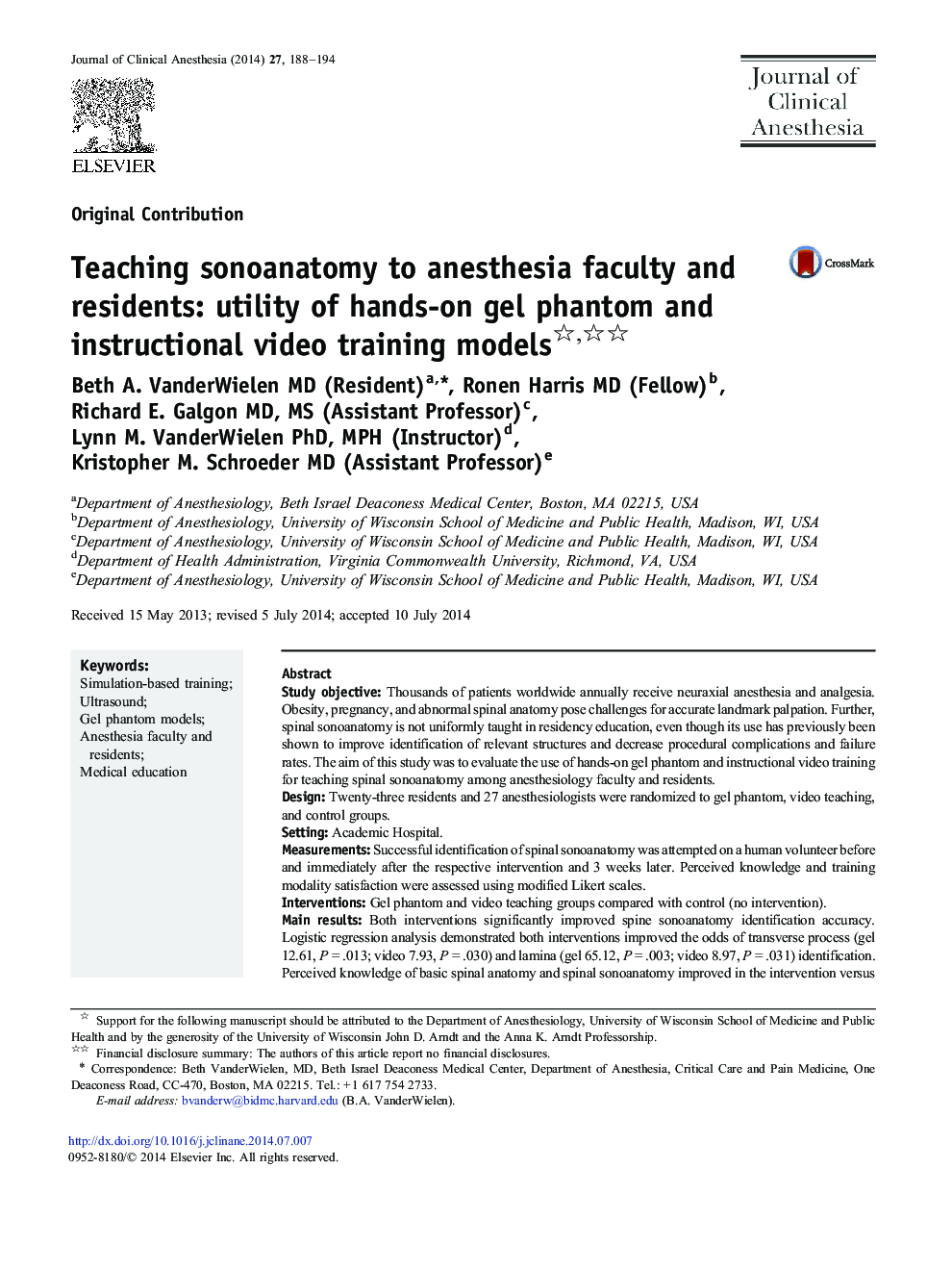| Article ID | Journal | Published Year | Pages | File Type |
|---|---|---|---|---|
| 2762699 | Journal of Clinical Anesthesia | 2015 | 7 Pages |
•We developed low-cost tools to improve anesthesiologist sonoanatomy knowledge.•Brief interventions can improve sonoanatomy knowledge regardless of skill level.•We discovered a potential avenue to enhance ultrasound education for residents.
Study objectiveThousands of patients worldwide annually receive neuraxial anesthesia and analgesia. Obesity, pregnancy, and abnormal spinal anatomy pose challenges for accurate landmark palpation. Further, spinal sonoanatomy is not uniformly taught in residency education, even though its use has previously been shown to improve identification of relevant structures and decrease procedural complications and failure rates. The aim of this study was to evaluate the use of hands-on gel phantom and instructional video training for teaching spinal sonoanatomy among anesthesiology faculty and residents.DesignTwenty-three residents and 27 anesthesiologists were randomized to gel phantom, video teaching, and control groups.SettingAcademic Hospital.MeasurementsSuccessful identification of spinal sonoanatomy was attempted on a human volunteer before and immediately after the respective intervention and 3 weeks later. Perceived knowledge and training modality satisfaction were assessed using modified Likert scales.InterventionsGel phantom and video teaching groups compared with control (no intervention).Main resultsBoth interventions significantly improved spine sonoanatomy identification accuracy. Logistic regression analysis demonstrated both interventions improved the odds of transverse process (gel 12.61, P = .013; video 7.93, P = .030) and lamina (gel 65.12, P = .003; video 8.97, P = .031) identification. Perceived knowledge of basic spinal anatomy and spinal sonoanatomy improved in the intervention versus control groups. Mean (SD) modified Likert scale scores for learning satisfaction (1 = unsatisfied, 10= very satisfied) were 8.1 (1.5) and 8.0 (1.7) for hands-on gel phantom and instructional video training participants, respectively.ConclusionUse of hands-on gel phantom or instructional video training can improve anesthesia staff and resident knowledge of lumbar spine sonoanatomy.
